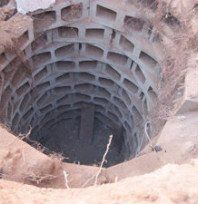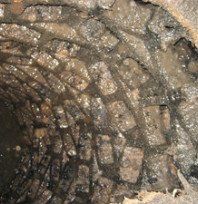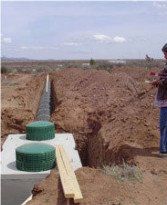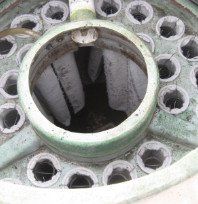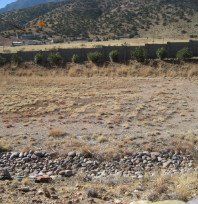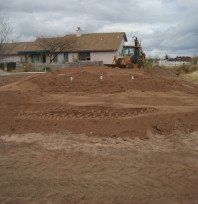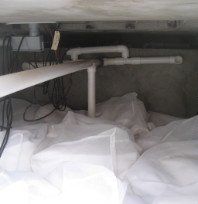DIFFERENCES
Seepage Pits
Seepage pits are earlier absorption plants and instead of the long and narrow trenches, they are usually 5ft to 6ft across and can be as deep as 10ft. The sides are honeycombed to facilitate the effluent (water) flow out of the side holes. There are usually two in a series. Some of the lids on these pits are very thick and some are very thin. Over the years, hydrogen sulfide generated in the pit can cause the lid to weaken – as is evident in these lids. When the lid is thick, we usually see animal erosion on the sidewalls. The animal activity weakens the soil and you will see holes in your yard around the pits.
The pits are found locally in systems that were installed in the late 60s and early 70s. They have lived long past their designed age and are dangerous. The unsuspecting homeowner will not be aware of what lies under their feet.
Village Meadows and Town and Country are the two main areas where these old pits reside. When we are inspecting in these areas, we perform a video inspection with our SeaSnake camera which enables us to determine whether they are present and what condition they are in.
Cesspools
Cesspools Cesspools are simply holes in the ground with no septic tanks. There is no treatment process and the untreated sewage flows into the ground. These can be crudely made with just a hole filled with rocks or in some cases, they may have honeycomb sides, either way, they are illegal in Arizona.
Conventional System
Conventional systems are designed with rock trenches. In 2001, Arizona Department of Environmental Quality mandated these trenches, would be shallow rather than the older permitted fields of deep trenching. Shallow trenches close to the surface provide more oxygen for treatment of pathogens and slow down nitrates entering the soil moving down to the aquifer. Conventional trenches can also be permitted with chambers. I describe them as little quansit huts. They sit directly on the earth and are open from the soil to the top of the chamber, with louvers on the sidewalls.
Chamber System
There are many different alternative types of treatment on the market today. The major difference in most of these systems is that they have lots of “bells and whistles”. That means they have pumps, alarms, and timers.
Mounds
look like a raised bed on the property. They have a system of pipes and emitters. The sewage is pumped from the septic tank to the bed in timed doses.
Evapotranspiration beds
are recessed in the earth. They have a very thick plastic liner and are composed of various special layers of rock, peat, sand and soil. They are made so the effluent (water) wicks up to the surface. The effluent is also taken up with natural grasses and vegetation. The name is really self explanatory evapo water wicks up to the surface and evaporates and transpiration takes place through the leaves and grasses of the natural vegetation.
Aerobic Treatment Units or ATUs
consist of several treatment containers. A conventional (trash tank) to process the solids, followed by aerobic bubbling and passing through to a chlorination tank and then to hundreds of feet of emitters just under the surface of the soil.
*Access a search engine to find out more about alternative systems.
